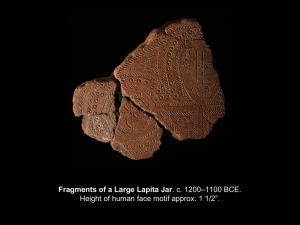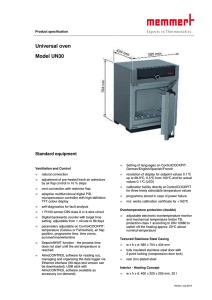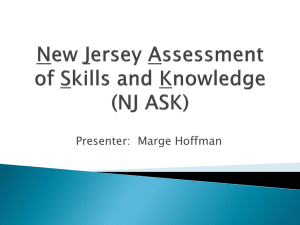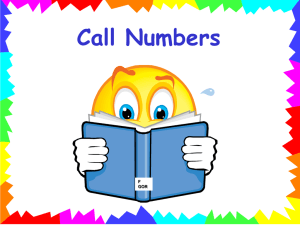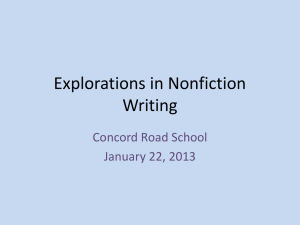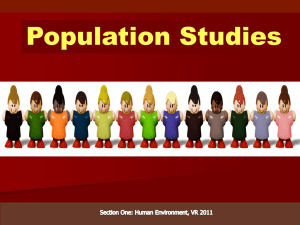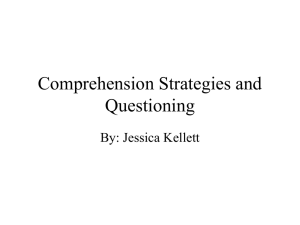FCAT Parent Night 2013-2014 Presentation1
advertisement
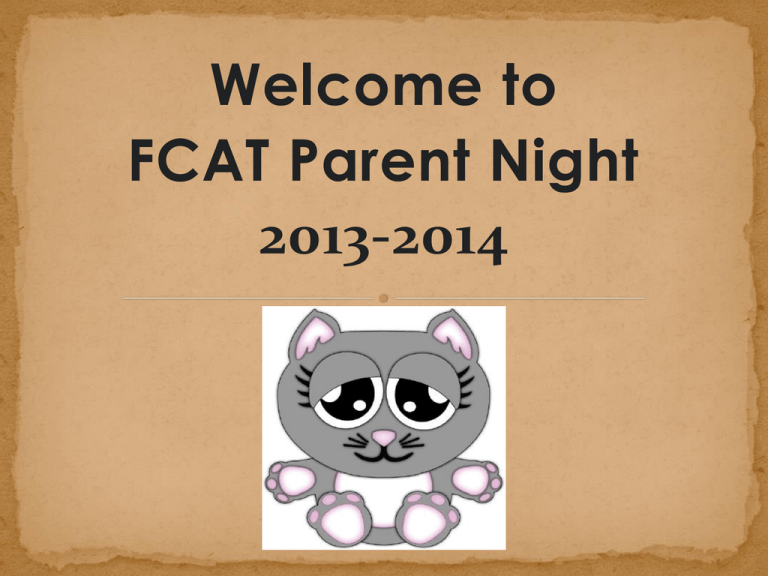
Welcome to FCAT Parent Night 2013-2014 Florida Comprehensive Assessment Test Designed to measure student achievement based on the Next Generation Sunshine State standards (NGSSS) It measures what students know in Reading, Math, Writing, and Science All students in grades 3rd -5th, including English Language Learner (ELL) and exceptional student education (ESE) students enrolled in the school. Accommodations are provided to eligible ELL and ESE students. To measure the skills that students have acquired throughout the years. The test helps teachers determine the level of success with the Next Generation Sunshine State Standards (NGSSS). Gr. 3 Reading and math Gr.4 Reading, math and writing Gr. 5 Reading, math and science To define what students should know and be able to do To identify clear expectations for students, parents, and teachers Standards define what we want to achieve Grade 3rd 4th 5th Subject Areas Reading Math Dates Writing Reading Math Reading Math Science Feb. 25-26 April 21-25 April 21-25 April 21-25 April 28-May 7 April 21-25 April 21-25 April 21-25 Students write an essay in response to a prompt. Students will have 60 minutes to complete their prompt. Writing prompts may be: Expository: Writing to inform, clarify, explain, define, or instruct. Narrative: Writing to recount a personal or fictional experience or to tell a story based on a real or imagined event. Expository Write to explain Narrative Tell a story about your most why you think a embarrassing certain pet would moment. be good for your classroom. Tell what happens after you go Explain why it is through a door important to eat that is always healthy foods. locked. Papers are scored using a 1-6 rubric based on the following areas: Focus: clearly maintains a main idea, theme or unifying point. Organization: structured (sequence, cause and effect, compare and contrast, etc.) Support: quality of details used to explain, clarify, or define. The quality depends on word choice, depth, relevance, etc. Conventions: use of punctuation, spelling, capitalization, and sentence structure. mally esses . No nizational rn. orting may be e. uent errors nctuation, ing, alization, entence ture. 2 3 4 5 6 Slightly related to topic. Offers little relevant information and few supporting ideas or examples. Word choice may be limited. Frequent errors in writing conventions. Generally on topic but may include loosely related information. Paper may lack completeness. Some supporting ideas may not be developed with specifics and details. Limited word choice. Generally on topic but may include loosely related information. It’s organized. Demonstrates completeness. Some supporting ideas may contain details, while others may not be developed. Adequate word choice. Knowledge of conventions is visible. Demonstrates consistent awareness of topic with supporting ideas. Great organizational pattern. Demonstrates sense of completeness. Word choice is adequate. Most sentences are complete, although a few fragments may occur. Very few errors in subject/verb Stays on to and has logical organizatio pattern (beginning middle, conclusion Ample supporting ideas. The writing demonstra sense of completene and mature word choic Subject/ver and verb/n forms are Read! Be a writer yourself (model) Share some of your work (previous or current) Remind your child to make connections to real experiences or use their imagination Make positive remarks and suggestions Show excitement as you read Remember to be the coach and not the writer! Consists of approx. 50-55 multiple choice questions Broken up into 2 sessions ( Approx. 70 minutes each). Students will have a break during each session. Reading questions are based on the Next Generation Sunshine State Standards Students will be asked more often to: use and build from prior knowledge, such as grade-appropriate vocabulary. make inferences that require higher order thinking. analyze information across a pair of texts, such as making comparisons of main ideas. Categories /Strands 1. Vocabulary 2. Reading Application 3. Literary Analysis: Fiction and Nonfiction 4. Informational Text/Research Process Vocabulary Approx. 15-25% of points Context clues Analyze words in text Multiple meanings Base words Antonyms Synonyms Reading Application Approx. 25-35 % of points Author's purpose Chronological order, conclusions, inferences, main idea, details, cause and effect Text structure Compare and contrast Literary Analysis: Fiction and Nonfiction (Approx. 25-35 % of points ) Character point of view and development Plot development; Problem/resolution Descriptive language, figurative language Informational Text and Reference and Research (Approx. 15-25 % of points ) Locate Interpret Organize information Text features Types of Literary Text Types of Informational Text Fiction Short stories Poetry Historical fiction Fables and folktales Legends Myths Fantasy Drama Excerpts from novels Nonfiction Biographical and autobiographical sketches Diaries, memoirs, journals, letters Essays (e.g., personal and classical narratives) Primary Sources/Nonfiction Historical documents (e.g., Bill of Rights) Secondary Sources/Nonfiction Magazine articles Newspaper articles Editorials Encyclopedia articles Functional Materials Embedded in text (e.g., tables, charts, maps, graphs, illustrations, photographs, captions, text boxes) How-to articles Brochures, fliers, advertisements Schedules Website pages Grade Literary Text Inf. Text 3 60% 40% 4 50% 50% 5 50% 50% The complexity of questions will vary: Low: recall and recognition of previously learned concepts. Moderate: requires basic reasoning or problem solving with more than a single step process. High: requires heavy demand on student thinking. Students must engage in abstract reasoning, planning, analysis, judgment, and creative thought. Students think in multiple steps. Grade 3rd 4th 5th Low 25–35% 20–30% 15–25% Moderate High 50–70% 50–70% 50–70% 5–15% 10–20% 15–25% Create a reading routine Read to them (expression), with them (to model reading rate) and have them read to you (independent reading)! Ask your child to retell what they have read and to predict what will happen next Make connections between reading and writing Divided into two sessions. Students will have approximately 70 minutes Approx. 50-55 questions ***5th graders math portion will be computerized Computer-based practice tests for Math called ePATS are available at www.FLAssessments.com/ePAT * Number Sense: operations, problems, statistics, base 10 and fractions *Geometry and Measurement *Operations, problems, statistics, expressions and statistics Rigorous questions may include: Equivalent forms using whole numbers, decimals, fractions and percent. Operations involving addition, subtraction and multiplication Word problems including estimating, length, weight, perimeter, area, capacity, volume, time, temperature and angles. Spatial relationships, symmetry, reflections, congruency and similarity Graphing, diagrams and symbolic expressions Generating, collecting, organizing and analyzing data Multiple steps and higher order thinking About ¾ of Florida State Parks allow pets. Which decimal equals ¾? 0 .25 .50 .75 +--------+---------+---------+---------+ 0 ½ A. .12 B. .25 C. .50 D. .75 1.0 1 Kim’s family is driving from Georgia to Florida. They want to know how much time their trip will take. Which tool would be best for them to use? A B C D Thermometer Ruler Measuring cup Clock Sandra’s garden is in the shape of a trapezoid, which has only one pair of parallel sides. Which could be the shape of her garden? A B C D Mary and Tim were playing tennis. They started with 6 tennis balls. Three of the tennis balls went over the fence. If b represents the number of balls Mary threw back over the fence, which expression represents the situation? A. (6-3) + b B. 6-(3+b) C. 6+(3-b) D. (6+3)-b The table shows the outcomes for a game in which you use a spinner with 3 equal parts colored blue, green, and pink and toss a cube labeled 1, 2 or 3. How many possible outcomes are there? Color 1 2 Blue Green Pink A. 6 B. 9 C.12 D. 15 3 Help your child master basic facts (addition, subtraction, multiplication and division) Explore math in every day life situations (cooking, writing checks, paying bills, shopping, etc.) Help your child learn math vocabulary Encourage your child to do math in their head Involve your child when you plan home improvement tasks. Level 5 Level 4 Level 3 Level 2 Level 1 Students at this level demonstrate mastery of the NGSSS Students at this level demonstrate above satisfactory level of the NGSSS Students at this level demonstrate a satisfactory level of the NGSSS Students at this level demonstrate a below satisfactory level of the NGSSS Students at this level demonstrate an inadequate level of the NGSSS Two 80 minute sessions (approx. 60-66 multiple choice questions) Strand areas include: *Nature of science Approx. points 17% *Earth and space science Approx. points 9% *Physical science Approx. points 29% *Life science Approx. points 25% Identify, locate, recognize, interpret, demonstrate, analyze, explain and apply their knowledge (scientific method). Students should take time to understand science vocabulary (reread) Observe Investigate Make logical predictions Design and conduct experiments Collect and organize data Explore possible conclusions Communicate databased decisions Read with your child Ask your child to take a close look at any picture, graph, or table that appears with a passage. Ask your child to make connections to self, text and world Motivate your child to be inquisitive and to be mini investigators. Read articles related to science Watch science related documentaries and discuss as you watch Many children learn by doing and not just by listening The more senses involved in the learning process, the better understanding of concepts our children will have. www.fcatexplorer.com (reading) www.Studyjams.com (science and math) www.floridachieves.com (reading and math) http://fcat.fldoe.org/fcatrelease.asp (information/practice tests) Study Island (multiple subject areas) www.fldoe.org (information) www.thinkcentral.com (reading, math and science) www.educationcity.com (multiple subject areas) www.multiplication.com (math) www.Ar.com (reading) Computer based practice tests www.FLAssessments.com/ePAT recommended for 5th graders Math computer assessment (Good practice for computerized tools) A powerful phrase we should keep repeating “I BELIEVE IN YOU”

